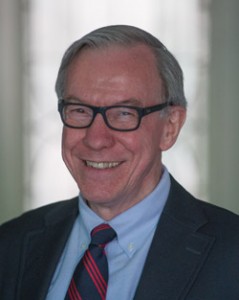by Geoff Kane, MD, MPH, FASAM | Jun 12, 2014
 Stories are everywhere. They inspire and entertain; they enrich family and culture; they lead and persuade. Our personal stories carry our sense of identity and worth. Interpersonal relationships shape our stories and, if relationships have been hurtful, our stories – our lives – often repeat the hurt.
Stories are everywhere. They inspire and entertain; they enrich family and culture; they lead and persuade. Our personal stories carry our sense of identity and worth. Interpersonal relationships shape our stories and, if relationships have been hurtful, our stories – our lives – often repeat the hurt.
Neuroscientists are learning what the wise already knew, that stories and lives are more about feelings than language; that our behavior derives more from emotion than deliberate choice. Feelings of self-worth and shame intertwine with our hopes, fears, and expectations in ways that determine many of our actions. With higher self-worth and self-acceptance, we are more resilient and our actions are often adaptive. With deeper shame and self-doubt, we court rejection and our actions are often self-defeating.
Pivotal feelings of worth and unworthiness are formed by our relationships with early caregivers and are further formed (and can be reformed) in interpersonal relationships during the rest of our lives. Not one of us had perfect caregivers, and every one of us has a share of shame—but the shares are not equal. The more troubled our caregivers and the more abuse and neglect we encountered growing up, the greater our burden in adulthood not only of shame but also of medical and mental illness and addiction.
Many individuals who present for addiction treatment have spent much of their lives in a self-defeating mode, which is consistent with adverse experiences in childhood, shame, and low self-worth. Their needs may include detoxification, medical and psychiatric stabilization, structured continuing care and accountability, and perhaps continuing medication. These patients also have an underlying need – which may undo the rest of treatment if it is not met – the need to be heard. Ambivalent and vulnerable until they feel heard and respected, they may not have enough hope and direction to sustain them in treatment.
Sources of clinical guidance and inspiration – including humanistic psychology (e.g., Carl Rogers, Sidney Jourard), motivational interviewing (e.g., William Miller, Theresa Moyers), shame reduction (e.g., John Bradshaw, Brené Brown), narrative therapy (e.g., Michael White, David Epston), acceptance and commitment therapy (e.g., Steven Hayes, Kelly Wilson), and interpersonal neurobiology (e.g., Daniel Siegel, Allan Schore, Louis Cozolino) – all encourage us to listen. Theories behind the practice may vary; for example, to help patients become more mindful of emotional causes and effects, better integrate feelings with conscious decisions, or rewrite personal narratives. But the practice remains: the patient talks and the professional listens – listens to at least one sequence of the patient’s story with respect, empathy, values, and appreciation for the human condition.
But how feasible is that? Medical practitioners who see patients early in the treatment process are not expected to spend much time listening. Insurers and administrators want economy and productivity. “Leave therapy to the therapists,” they might say, “we allow them fifty minutes with the patient.” Yet initial sessions with therapists usually do not take place until several weeks after patients enter treatment. And unless patients make human connections early they may no longer be engaged in treatment when the date of their therapy appointment finally arrives.
This need to be heard may be one of those human imperatives that are so basic, and so biologically determined, that they must be met at the expense of conflicting priorities. Something like this: Air travel was the only option when a man in his 80’s who rarely flew anywhere was determined to attend his granddaughter’s wedding a thousand miles away. His departing flight was about to accelerate down the runway when the elderly man unbuckled his seat belt and rushed to the rear of the passenger compartment. He was in the lavatory before the startled flight attendant, harnessed in her jump seat, could intervene. She protested, “He can’t do that!” The captain’s going to take off.” The man’s son, already in the aisle, turned with a shrug and said, “Tell the captain he has to wait.”
Story is identity. Relationships create story; some wound, and some heal. Storytelling creates relationships – there can be no storyteller without a listener – and when the listener is open and nonjudgmental storytelling itself becomes an opportunity to heal.
People with active addiction have extraordinary difficulty with authenticity and asking for help. Yet if we pay attention we can catch them at it, hear and respond to who they are, and contribute to the transformation and healing that is recovery.